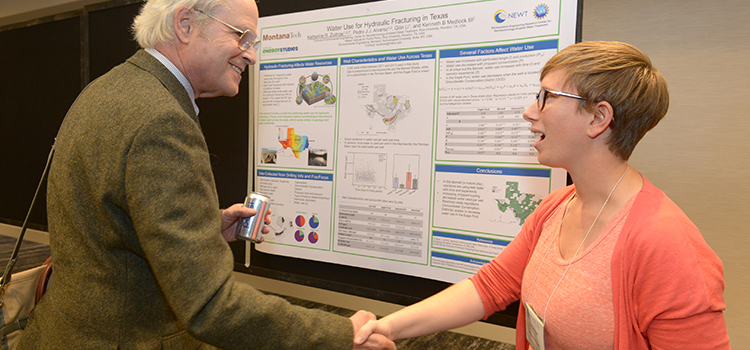
Scientists and engineers from different disciplines come together at the Sigma Xi Annual Meeting. This year, integrating arts into research will be a focus.

“We are in this together,” people say about our collective distancing efforts to stop the spread of the new coronavirus. The emphasis is on our togetherness because, as social human beings, that is what many are missing the most. The separation from our usual routines and support systems creates new challenges for teamwork and creative thinking.
Just as the current physical distancing disrupts our natural state of socialized work, higher education has been experiencing a longer period of distancing of its own, one of discipline distancing. The arts, humanities, science, mathematics, and engineering studies have become more specialized and disconnected. A report from the United States’ National Academies of Sciences, Engineering, and Medicine examines evidence that integrating arts and humanities with science, technology, engineering, math, and medicine (STEMM) lead to improved educational and career outcomes.
Spoiler alert: The report’s authors found that “certain approaches to the integration of the arts and humanities with STEMM are associated with positive learning outcomes, including, but not limited to, written and oral communication skills, teamwork skills, ethical decision making, critical thinking and deeper learning, content mastery, general engagement and enjoyment of learning, empathy, resilience, the ability to apply knowledge in real-world settings, and indicators of improved science literacy.”
All are solid skills for the researchers of today and tomorrow.
As we have each become more specialized, have we moved away from teaching and working in a way that provides the most opportunity for students, scientists, and engineers to advance new knowledge that will improve our world? Sigma Xi has devoted its 2020 Annual Meeting and Student Research Conference to explore this question. We are planning symposia that illustrate the benefits of interdisciplinary research collaborations and share best practices for carrying them out.
Our theme is “Hacking the Brain: The Intersection of Art and Neuroscience” for the advancement of science and engineering. We will demonstrate what art and science achieve together that neither could accomplish alone. The symposia tracks ask what neuroscience tells us about how the ways we see, hear, and move influence our ability to create and process new knowledge. We will ask how arts can be integrated into STEMM education, also known as STEAM. For example, what does neuroscience teach us about visual communication and data visualization? How can understanding the brain’s response to sound help people conduct, understand, and use science? How does cognitive science inform artificial intelligence-based engineering projects?
The meeting is planned for November 5–8 in Alexandria, Virginia, when we could be back to sharing our science in person. Our planning team is monitoring public health guidance and will follow recommendations for in-person gatherings. So far, we expect the meeting will be held as originally planned. I’m looking forward to seeing students eagerly preparing to present their posters to judges, and that lightbulb moment that spreads across their face when the judge poses an insightful question about their work. I look forward to seeing familiar faces of Sigma Xi members and friends in the halls and common areas. It will be nice to make new contacts just by the chance of who I happen to connect with during a session or meal.
For now, it’s difficult to imagine convening again for any social or professional event, but it is that togetherness, both physical and intellectual, that drives human progress. In the meantime, we are doing all that we can, while staying apart, to make it possible to reunite in the future. We are grateful for the interdisciplinary teams that are collaborating to understand SARS-CoV-2, develop a vaccine and therapies, predict future global hot spots of disease transmission, and produce medical equipment. These efforts not only benefit from their disciplinary integration, but they also serve to re-integrate society back together again, as our human nature compels us to do.
It’s because of their work, and the work of everyone on the front lines now—from social workers to scientists, engineers, doctors and nurses—that there will be a day when this outbreak subsides, and we will reconnect. When we do, Sigma Xi will be there to prepare you to reach across disciplines in new and productive ways to advance your research.
Do you have an example of how art or humanities have advanced your research? If so, please contact us so we can incorporate your work into the Annual Meeting program.
Sincerely,

Jamie Vernon
Executive Director and CEO, Sigma Xi
Publisher, American Scientist